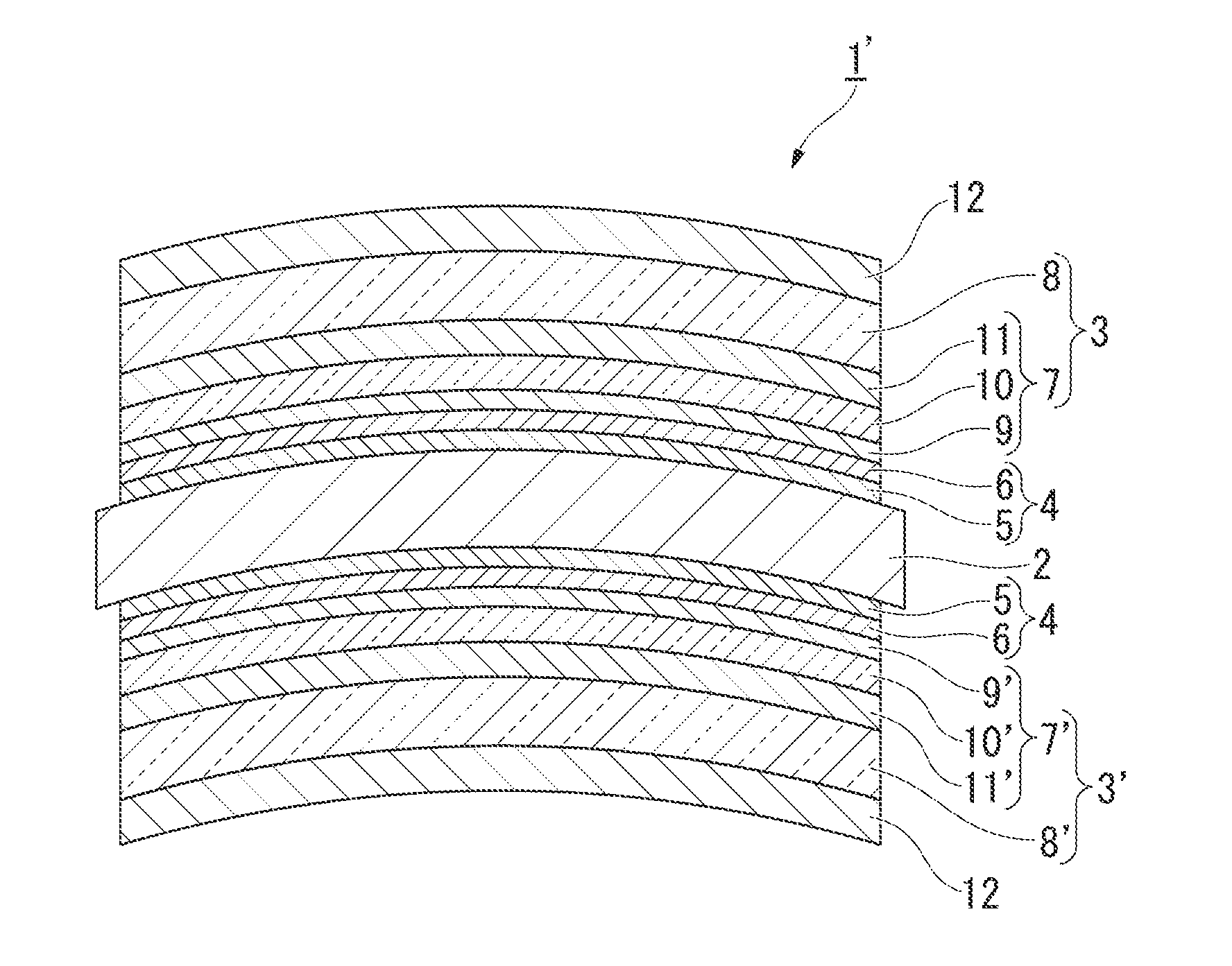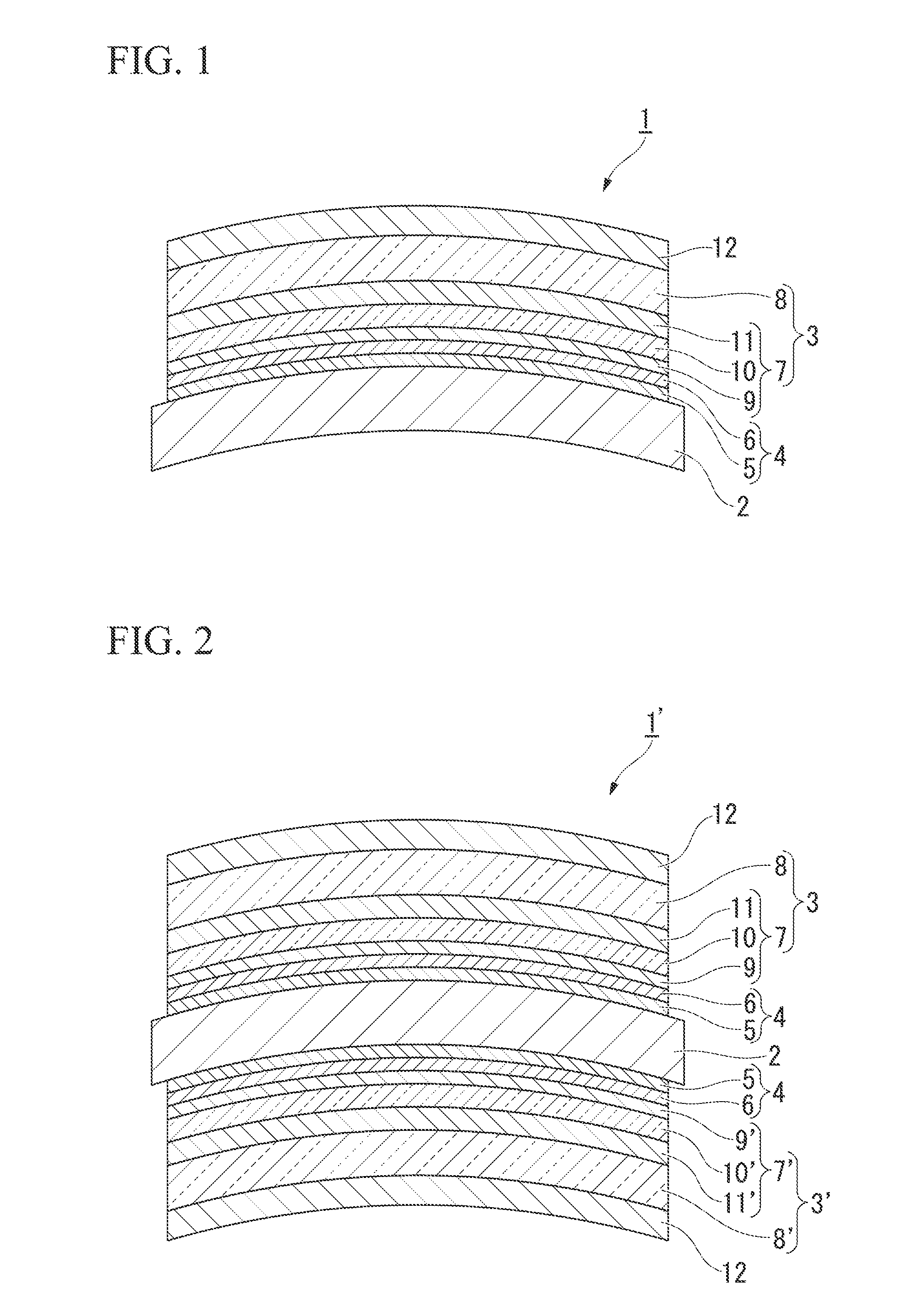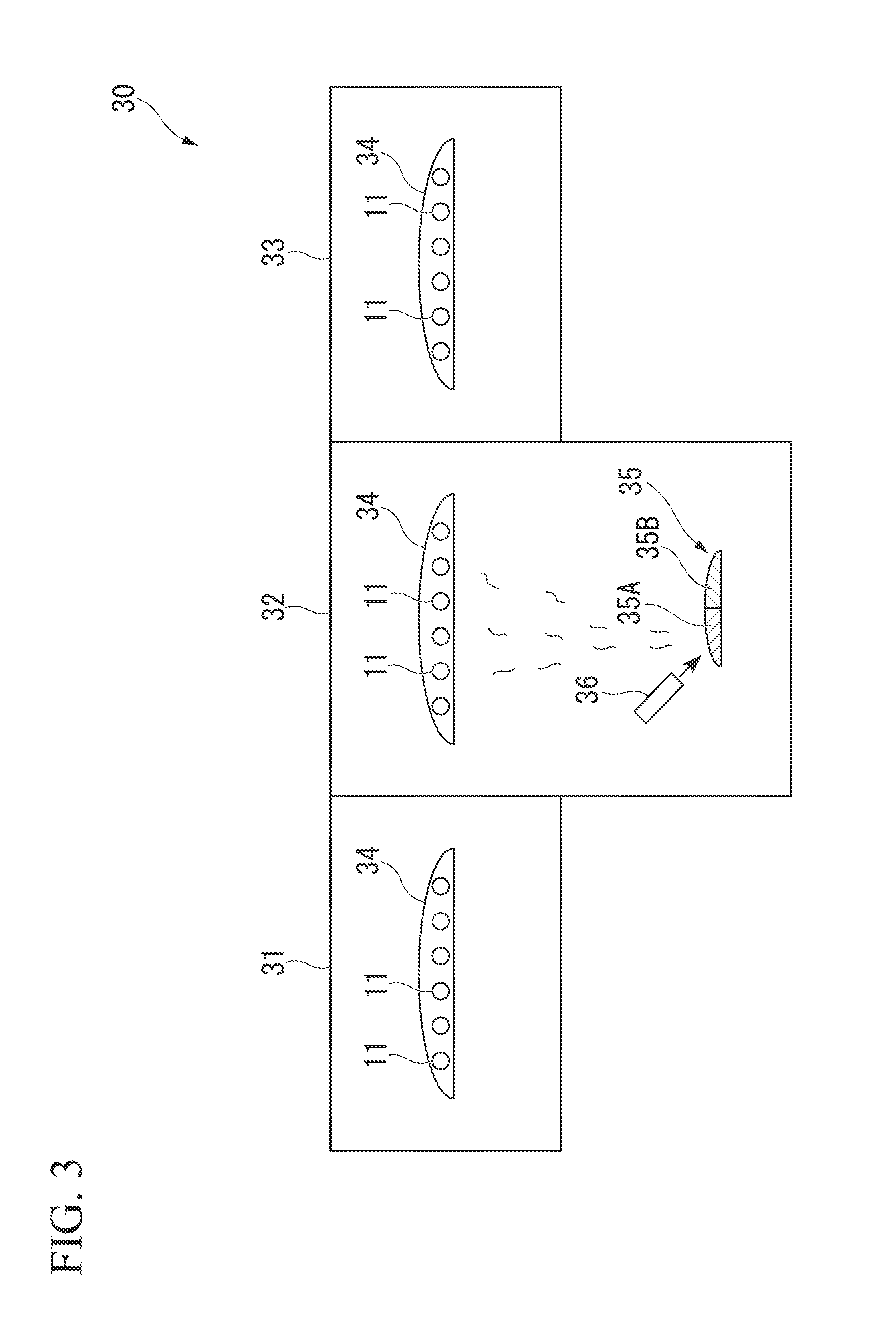Optical component and method of manufacturing the same
a technology of optical components and optical components, applied in the field of optical components, can solve the problems of low reflection characteristic over the entire visible region, impact on the retina, deterioration of visibility, etc., and achieve the effect of improving visibility, adhesion, and effective antiglare
- Summary
- Abstract
- Description
- Claims
- Application Information
AI Technical Summary
Benefits of technology
Problems solved by technology
Method used
Image
Examples
first embodiment
(1) First Embodiment
[0032]FIG. 1 is a sectional side view schematically showing an optical component of a first embodiment of the invention. The reference numeral 1 represents an optical component for a spectacle lens.
[0033]The optical component 1 is provided with a plastic base 2 and an inorganic multilayer film 3 disposed on a convex surface of the plastic base 2. In this embodiment, a functional thin film 4 is disposed between the convex surface of the plastic base 2 and the inorganic multilayer film 3. In this embodiment, the functional thin film 4 is formed of a primer layer 5 and a hard coating layer 6.
[0034]In the following description, the films 3 and 4, which are disposed on the surface (convex surface) of the plastic base 2, will mainly be described. However, actually, films which are the same as the films 3 and 4 formed on the surface (convex surface) are also formed on the rear surface (concave surface) of the plastic base 2.
[0035]The plastic base 2 is made of, for examp...
second embodiment
(2) Second Embodiment
[0065]FIG. 2 is a sectional side view schematically showing an optical component of a second embodiment of the invention. The reference numeral 1′ represents an optical component for a spectacle lens. In FIG. 2, the same constituent elements as in the optical component 1 shown in FIG. 1 will be denoted by the same reference numerals, and descriptions thereof will be omitted.
[0066]The optical component 1′ is provided with, in addition to the structure of the optical component 1 of the first embodiment, an inorganic multilayer film 3′ disposed on a concave surface of a plastic base 2. In this embodiment, a functional thin film 4 is disposed between the concave surface of the plastic base 2 and the inorganic multilayer film 3′. The functional thin film 4 is formed of a primer layer 5 and a hard coating layer 6 in this embodiment.
[0067]The inorganic multilayer film 3′ has a double-layer configuration which has a high refractive index layer 7′ having a multilayer str...
examples
[0092]Hereinafter, examples of the embodiments of the invention will be described in more detail, but the invention is not limited to the following examples.
[0093]Test 1
[0094]On a urethane-based synthetic resin substrate, a silicon-based hard coating having a refractive index of 1.67 and a primer coating having a refractive index of 1.67 were prepared by thermal curing, and film formation was performed by a vacuum deposition method as follows.
PUM
| Property | Measurement | Unit |
|---|---|---|
| Fraction | aaaaa | aaaaa |
| Fraction | aaaaa | aaaaa |
| Fraction | aaaaa | aaaaa |
Abstract
Description
Claims
Application Information
 Login to View More
Login to View More - R&D
- Intellectual Property
- Life Sciences
- Materials
- Tech Scout
- Unparalleled Data Quality
- Higher Quality Content
- 60% Fewer Hallucinations
Browse by: Latest US Patents, China's latest patents, Technical Efficacy Thesaurus, Application Domain, Technology Topic, Popular Technical Reports.
© 2025 PatSnap. All rights reserved.Legal|Privacy policy|Modern Slavery Act Transparency Statement|Sitemap|About US| Contact US: help@patsnap.com



